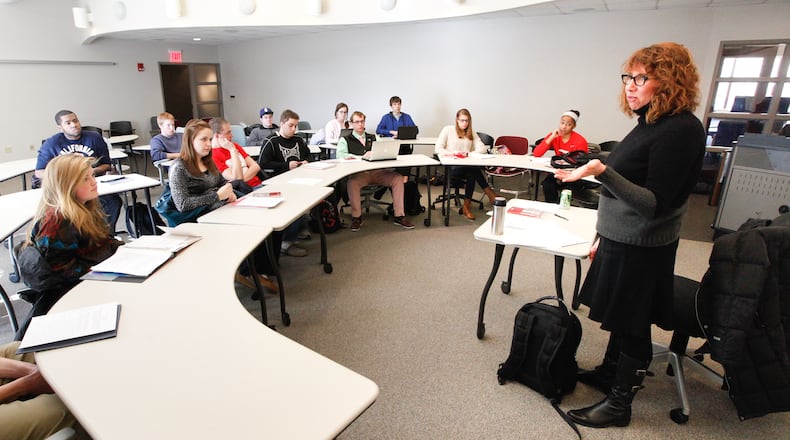The University of Dayton encourages anyone considering college to ask each institution the follow questions:
1. Will my scholarship/grant grow to cover tuition increases?
2. Will you help to offset the cost of textbooks?
3. Are there additional fees?
The University of Dayton is attracting national attention with its new four-year tuition plan, which eliminates the uncertainty of how much a bachelor’s degree will cost by removing hidden fees and offering a guarantee to new freshmen that they will pay the same amount for tuition all four years they are enrolled in school.
The effort is unique and is one UD hopes other colleges will copy. Starting in mid-March, prospective UD students will receive a personalized two-page letter detailing upfront the full cost to earn a degree — that is the cost for all four years, not just one, said Sundar Kumarasamy, vice president for enrollment management and marketing. The new tuition guarantee comes as UD has enrolled record first-year classes the last three years, and applications for the fall are already outpacing last year’s record volume by 6 percent.
“We want families to understand exactly what they will be paying for, from day one through graduation,” said President Daniel J. Curran in a news release.
“Our goal is to give full information and transparent access to the facts, and let them make an informed decision,” Kumarasamy said.
The university is pledging to freshmen who enter in fall 2013 that their scholarships and grants “will grow dollar for dollar each year as tuition increases.” All current students will also benefit from the removal of fees, which have included costs such as $90 to graduate or $65 for each hour spent in a laboratory. And UD even promises to cover any losses to a student’s federal or state financial aid during their four years.
UD’s letters detailing the four-year costs are potentially risky for the private, Catholic school, Kumarasamy admitted. Parents could be scared off by seeing the total cost for four years upfront. The current annual costs: $33,400 for tuition and fees, between $5,540 and $8,400 to live on campus and between $3,900 and $4,720 for meals. This fall, tuition will increase to $35,800. More than 90 percent of UD students receive financial aid.
“The truth might scare them,” he said. “There’s nothing out there to compare something like this.”
But the university is convinced providing more transparent information “this is the right thing to do,” he said.
The university is encouraging students to ask every college they apply to what the total cost of earning a degree will be. The federal government also is encouraging universities to be clear about costs. This year, more than 300 schools nationwide will voluntarily adopt new “college shopping sheets” making it easier to compare financial aid packages between schools. The sheets will include information on the institution’s student loan default rate and average student loan borrowing by students.
But at a time when many universities are imposing fees on certain classes and majors that are more expensive to offer, such as engineering, UD’s new policy represents a different direction. It means UD will not attempt to generate more revenue through fees, a practice by some schools that offer a locked-in tuition price.
“Locking in the net price, as opposed to just tuition, makes college costs more predictable, helping families plan for the full four-year cost of a college education,” said Mark Kantrowitz, a national financial aid expert and publisher of FinAid.org, in the news release.
UD’s tuition plan covers eight semesters and up to 140 credit hours. Students can earn a major and a minor, and even a double major, during the four years, according to UD.
About the Author
